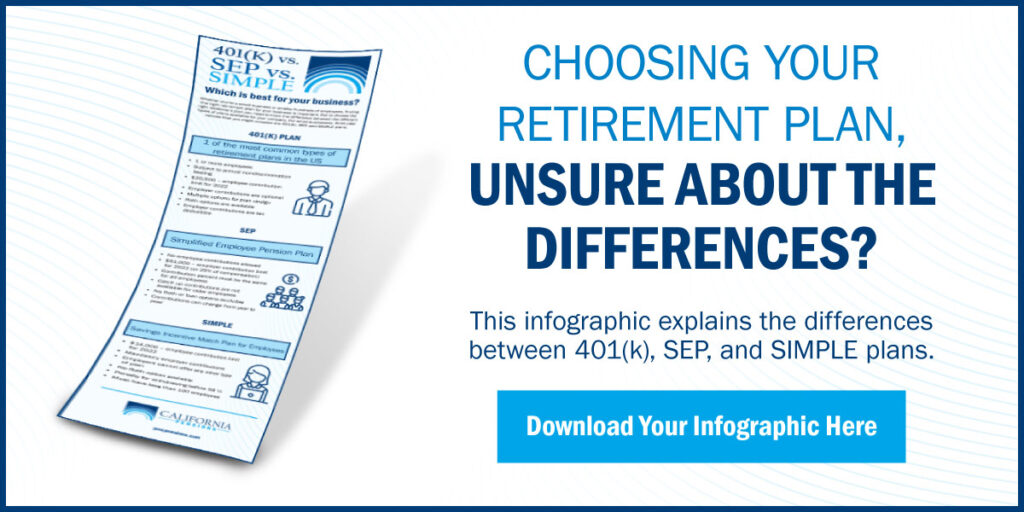Retirement planning can be a complex endeavor requiring careful consideration of various options and strategies to navigate. One term you’re likely to hear in discussions about retirement is “qualified retirement plan.” But what does it mean for a plan to be “qualified,” and what are the requirements for such plans? In this article, we will explore these questions, which plans are “qualified,” and the requirements and the tax benefits associated with them.
Do You Know These Surprising 401(k) Facts? Check Out Our Informative Infographic!
Understanding Qualified Retirement Plans
Qualified retirement plans come in two main types: defined benefit and defined contribution. A defined benefit plan provides a specific benefit at retirement, usually based on factors such as years of service and salary history. On the other hand, a defined contribution plan specifies the amount of contributions made to the plan by the employer and/or employee, with the account balance depending on the investment performance. The most well-known example of a defined contribution plan is the 401(k) plan.
In addition to these two main types, hybrid plans combine elements of both. One common example is the cash balance plan. In a cash balance plan, the employer contributes a percentage of each employee’s salary to a hypothetical account, which is then credited with a certain interest rate. This account grows over time and can provide employees with greater flexibility in managing their retirement finances.
What Makes a Qualified Retirement Plan “Qualified”?
For a retirement plan to be qualified, it must meet specific requirements set by the Internal Revenue Service (IRS) and the Employee Retirement Income Security Act (ERISA). These requirements ensure the plan provides fair coverage to employees and complies with regulations to receive favorable tax treatment. These requirements include contribution limits and vesting, which protects the employee’s right to their retirement account balance even if they leave the company before reaching retirement.
Another key requirement of a qualified retirement plan is the provision of benefits to a broad range of employees, without discriminating in favor of highly-compensated employees. This means that the plan must be accessible to both rank-and-file employees and highly-compensated employees. Non-discrimination testing is often used to ensure compliance with this requirement.
Which Plans are Considered Qualified?
There are several qualified retirement plans, including:
401(k): A 401(k) plan is one of the most common types of defined contribution plans. It allows employees to contribute a portion of their pre-tax income to the plan, up to certain annual limits. Employers may also offer matching contributions, further incentivizing employees to save for retirement.
403(b): A 403(b) plan is like a 401(k) plan except that it is exclusively offered by educational institutions, non-profit organizations, and certain public-sector employers. It allows employees to contribute on a pre-tax basis, and employers may offer matching contributions as well.
457(b): A 457(b) plan is a retirement plan available to employees of state and local governments, as well as some non-profit organizations. In addition to the benefits offered by a 401(k) and 403(b) plan, it also has no financial penalties for withdrawing too early and a double limit catch-up provision that allows for employees who started their plan years after they met the eligibility requirements to compensate for those years.
Tax Benefits of Qualified Retirement Plans
One of the biggest advantages of qualified retirement plans is the tax benefits they provide. These benefits include:
Tax-Deductible Contributions: Contributions made to qualified retirement plans, such as 401(k)s, are typically pre-tax and tax-deductible, which means that the retirement contributions from your income are not taxed that year. However, income tax will still be paid on money withdrawn from retirement accounts in the future.
Tax-Deferred Growth: Earnings from interest on pre-tax qualified retirement plan investments grow on a tax-deferred basis. This means that individuals do not have to pay taxes on the growth until they withdraw the money in retirement. This allows investments to potentially accumulate more over time due to the compounding effect.
Potential Tax-Free Distributions: Depending on the retirement plan type, qualified plans may offer tax-free distributions in retirement as long as their contributions are made on a post-tax basis. For example, distributions from a Roth 401(k) or Roth IRA are taxed before being put in retirement funds, and when the money is withdrawn, there will be no income tax on the initial contributions and the earnings built from interest.
California Pensions: Securing Your Financial Future
Qualified retirement plans are essential for those who are saving for retirement and securing their financial future. At California Pensions, we are dedicated to helping you plan for a secure financial future through qualified retirement plans. We understand the importance of having a comprehensive retirement strategy which aligns with your goals and aspirations. Our team of experts is committed to providing personalized guidance and tailored solutions to meet your unique needs. Contact us today to schedule a consultation and take the first step towards a secure financial future.


